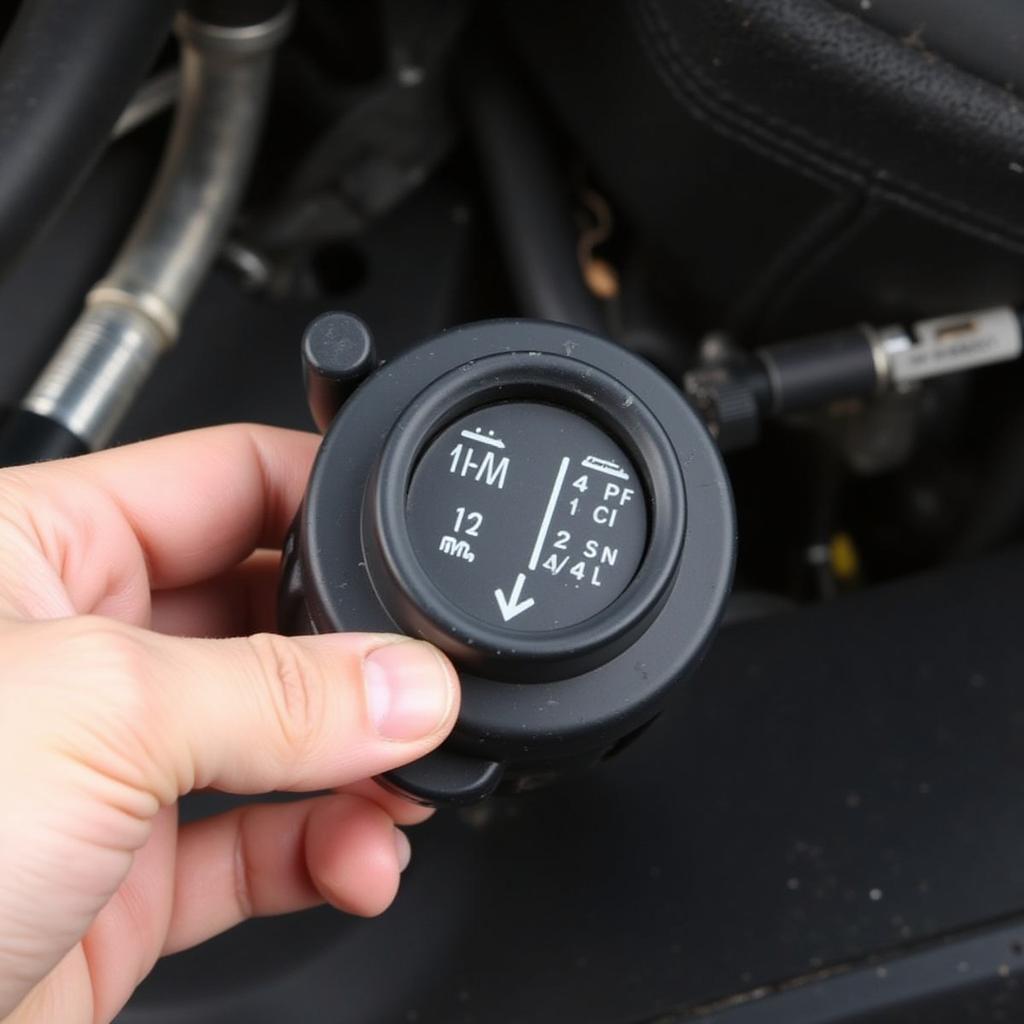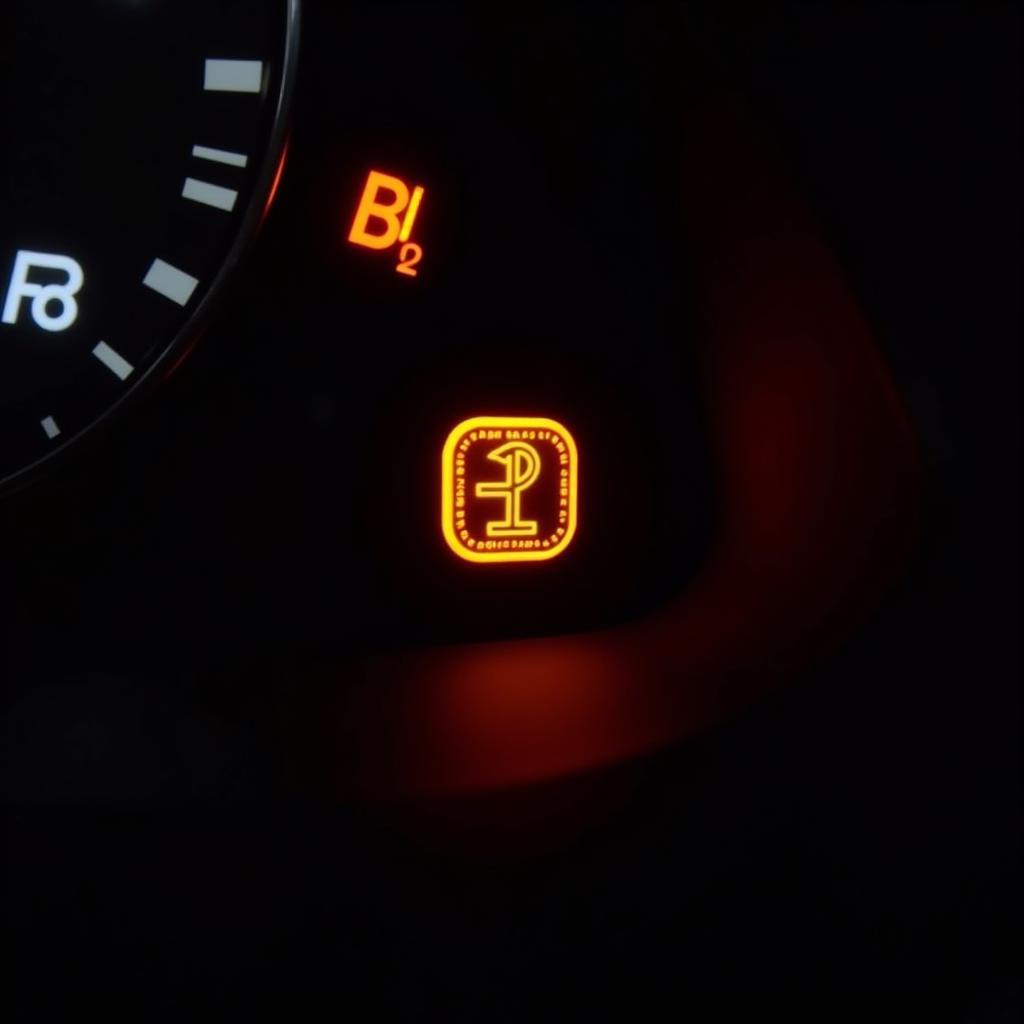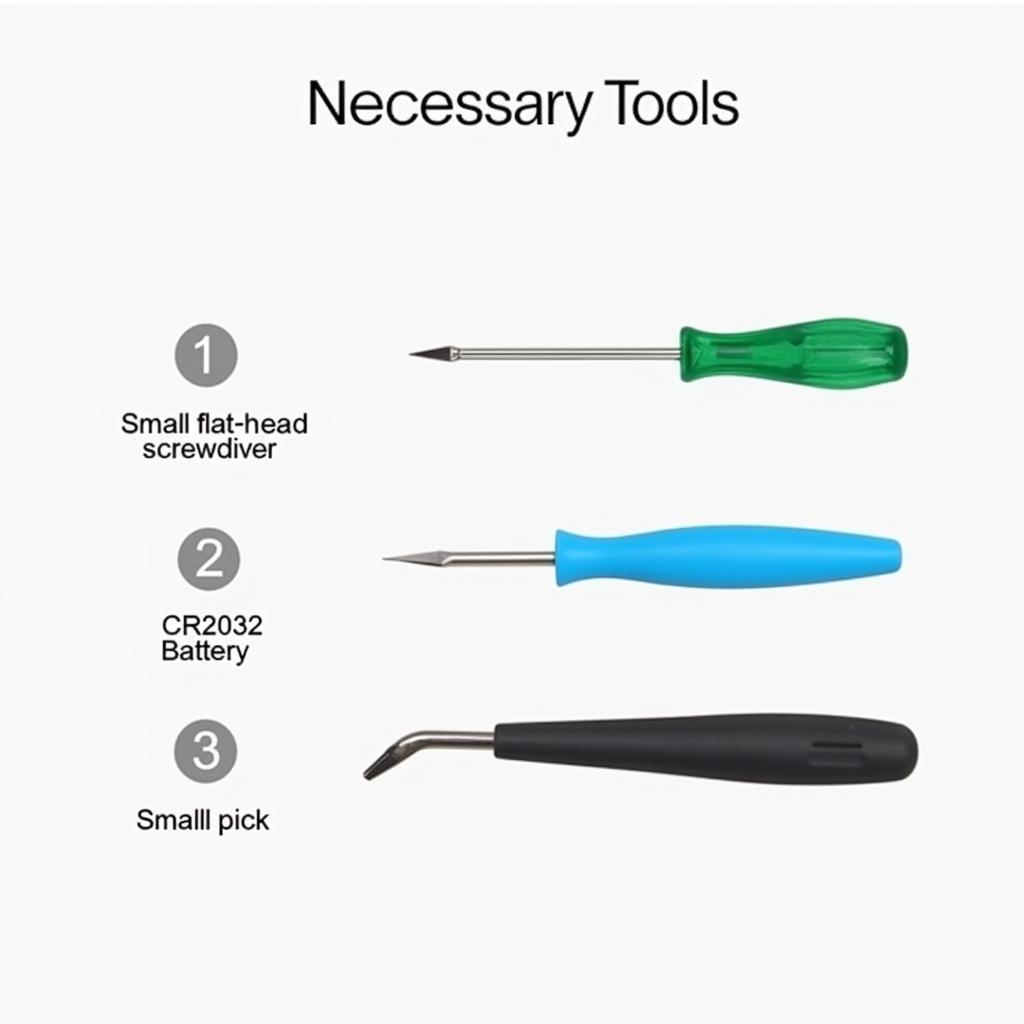The brake warning light on your dashboard is a critical safety feature, especially in a 2007 Town and Country minivan entrusted with precious cargo. When illuminated, it signals a potential issue with your braking system that requires immediate attention. Ignoring this warning could lead to reduced braking performance and increase the risk of accidents. This guide delves into the common causes of a 2007 Town and Country brake warning light and provides insights into diagnosing and addressing the problem.
Understanding Your Brake Warning Light
The brake warning light, typically a red circle with an exclamation mark or the word “BRAKE” inscribed, serves as your vehicle’s primary communication method regarding brake system health. When illuminated, it signifies one or more of the following:
- Low Brake Fluid: A common culprit, low brake fluid levels often indicate a leak in the system.
- Engaged Parking Brake: Accidentally leaving the parking brake partially engaged can trigger the warning light.
- Faulty Brake Light Switch: This switch activates the brake lights when you press the pedal. A malfunction can confuse the system, illuminating the warning light.
- Worn Brake Pads: Brake pads have wear indicators designed to activate the warning light as they reach the end of their service life.
- ABS Issue: If your 2007 Town and Country is equipped with an Anti-lock Braking System (ABS), a malfunctioning component within the system can trigger the light.
Diagnosing the Problem: A Step-by-Step Approach
Determining the exact cause of the brake warning light requires a systematic approach. Here’s a step-by-step guide:
- Check the Parking Brake: Ensure the parking brake is fully released. Even slight engagement can trigger the warning light.
- Inspect Brake Fluid Level: Locate the brake fluid reservoir under the hood, usually a translucent plastic container labeled “Brake Fluid.” Check the fluid level; if it’s below the “MIN” mark, add the appropriate DOT 3 or DOT 4 brake fluid (refer to your owner’s manual).
- Visual Inspection: Carefully examine the brake lines and hoses running along the undercarriage of your Town and Country. Look for any signs of leakage, cracks, or damage.
- Listen for Unusual Sounds: When applying the brakes, pay attention for any unusual noises like grinding, squealing, or clicking. These could indicate worn brake pads or other issues.
 Checking Brake Fluid Level in 2007 Town and Country
Checking Brake Fluid Level in 2007 Town and Country
Seeking Professional Help: When DIY Isn’t Enough
If the simple checks and visual inspection don’t reveal the cause, it’s crucial to seek professional assistance. Modern vehicles, like your Town and Country, have intricate braking systems that require specialized knowledge and tools for diagnosis and repair.
“Ignoring a brake warning light is like playing Russian roulette with your safety,” warns John Miller, a seasoned automotive technician with over 20 years of experience. “Brakes are your vehicle’s most crucial safety system; any potential issue deserves immediate attention from a qualified professional.”
Common 2007 Town and Country Brake System Issues
While the aforementioned steps cover the general diagnostic approach, some issues are more prevalent in 2007 Town and Country models:
- ABS Control Module Failure: The ABS control module, responsible for modulating brake pressure during hard braking, is known to experience issues in this model year.
- Wheel Speed Sensor Malfunctions: These sensors relay wheel speed information to the ABS system. A faulty sensor can disrupt ABS functionality, triggering the warning light.
Remote Diagnostics and Software Solutions
Advancements in automotive technology have paved the way for remote diagnostics and software-based solutions for certain brake system problems. Qualified technicians can now connect remotely to your Town and Country’s onboard computer, retrieving diagnostic codes and identifying potential software glitches. In some cases, software updates or recalibrations can resolve the issue without requiring physical intervention.
Conclusion: Prioritizing Your Safety
Addressing a brake warning light promptly is paramount to ensuring your safety and the safety of your passengers. While some causes are straightforward and easily addressed, others require the expertise of qualified technicians. Don’t hesitate to seek professional help when needed. Remember, a well-maintained brake system is an investment in peace of mind and safe travels.


